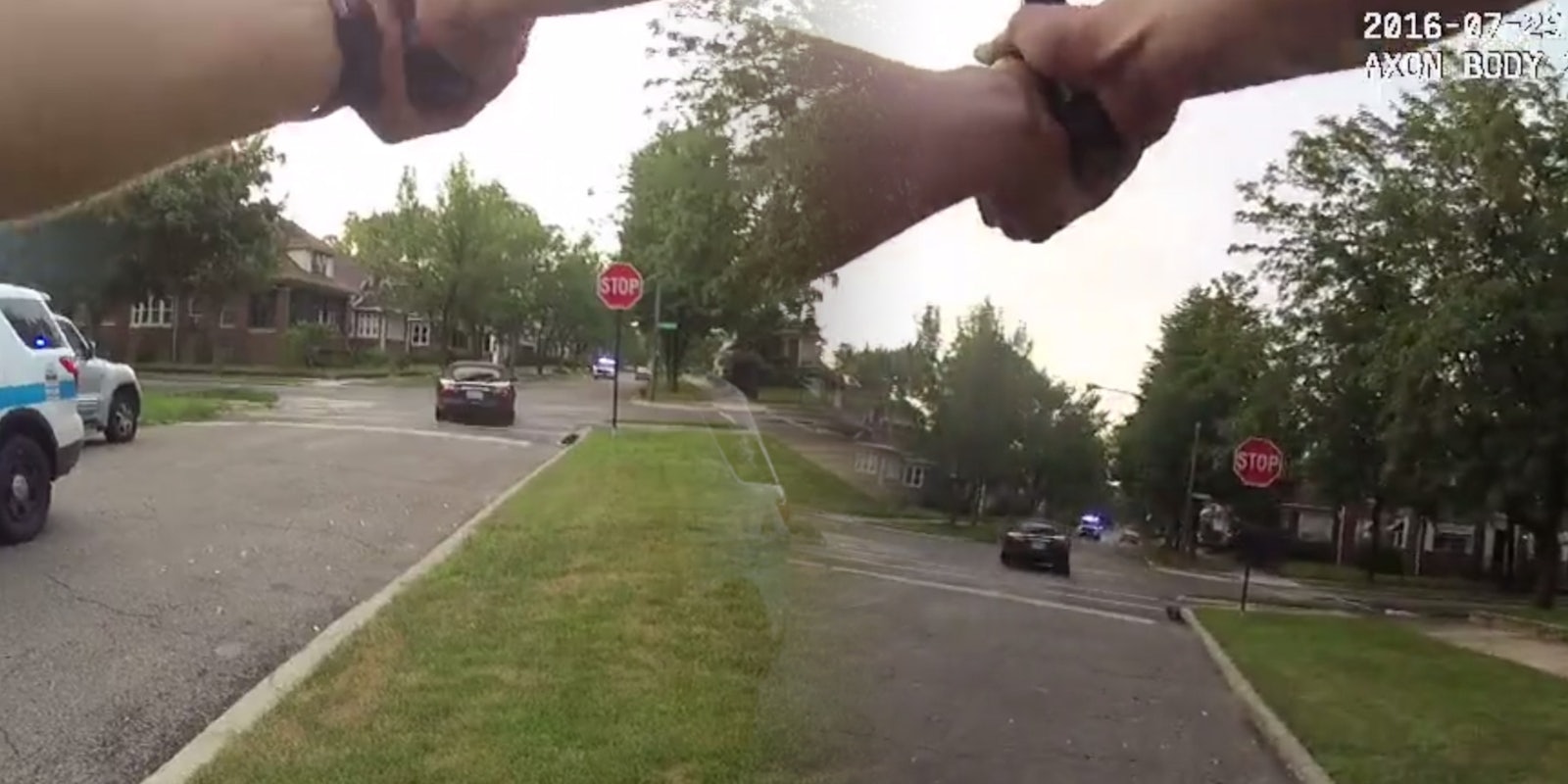Warning: The videos in this article contain scenes of graphic violence.
On Friday, officials in Chicago released a series of police body and dashboard camera videos showing the events that led to the death of 18-year old Paul O’Neal. The videos have enraged anti-police violence activists and members of Chicago’s African-American community, who called it an “execution.”
O’Neal was killed last Thursday after police attempted to pull over a black Jaguar he was driving, which had been reported as stolen earlier that day. The videos show the car slamming into a squad car and then speeding away, which was immediately followed by an officer firing multiple shots at the fleeing vehicle. The suspect fled on foot and was fatally shot in the back by officers giving chase.
In the clips, an officer can be heard calling O’Neal a “bitch-ass motherfucker,” as the suspect was held on the ground, already a victim of a gunshot wound. Another officer can be heard asking, “Why did you have to shoot at us?”
O’Neal was unarmed at the time of his death. It is believed police mistook gunfire by other officers as attacks on law enforcement officials made by the fleeing suspect. None of the officers appear to give O’Neal medical attention, but two can be seen high-fiving each other at the conclusion of the incident.
The nine videos showing the incident were made public through an online portal maintained by the Independent Police Review Authority. However, footage of the shooting that killed O’Neal is not actually included in the release because, according to officials, the camera that captured it was either malfunctioning during the shooting or fell off in the midst of the chase.
Three of the police officers involved in O’Neal’s death have been taken off active duty. Chicago Police Superintendent Eddie Johnson said on Sunday that the officers may have broken department rules, but didn’t specifically point out which rules are in question. However, the department’s use of force policy forbids officers from firing at moving vehicles unless the vehicle presents a direct and immediate threat to their physical safety.
Before being made public, the videos were shown to members of O’Neal’s family, who have filed a civil rights lawsuit against the city of Chicago, as well as a number of local community activists. “We just watched a family watch the execution of their loving son,” Michael Oppenheimer, an attorney representing the O’Neal family told ABC-7 News. It is one of the most horrific things that I have seen, aside from being in a movie. These police officers decided to play judge, jury, and executioner,” Oppenheimer said.
“What I saw was a cold-blooded murder,” Oppenheimer added in an interview with DNA Info. “It was a cold-blooded killing. You don’t even shoot—you shouldn’t even shoot dogs that are running away.”
“Watching that video, I feel like that was a tear right down the middle of the relationship between the community and police,” added community activist Jedidah Brown, who watched the videos with the family. “I saw an officer stomp a lifeless body in the back with his foot, while other officers stood over his body and screamed at him to put his hands behind his back. You could tell, watching these videos, that the narrative to cover this up had already begun before anything happened. You could hear officers telling other officers to cut off their body cameras.”
O’Neal’s death marks yet another incident in recent years where the release of video depicting Chicago police killing an African-American teenager has sparked public outcry in the city.
Late last year, Chicago officials made public a video showing Officer Jason Van Dyke fatally shooting 17-year-old Laquan McDonald, after the teenager ignored instructions to drop a knife he was allegedly using to slash car tires. The McDonald video triggered massive protests that snarled traffic in downtown Chicago for hours.
Whereas city officials released the O’Neal videos on their own volition, the McDonald video was only made public thanks to the persistent efforts of a freelance journalist, who obtained the tape using a series of public records requests. The difference is, in part, a change in department policy announced by Mayor Rahm Emmanuel in February, which made it so the city would begin releasing videos of all police shootings shortly after incidents occur.
There is typically a 60-day timeline for the release of this these types of videos, but Independent Police Review Authority Chief Administrator Sharon Fariey said the body decided to make the videos public much sooner in this particular case. “We are releasing this information that we understand is of utmost public interest,” she said.


